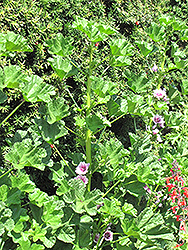It's all about ...
plants

Slightly Strawberry™ Cape Mallow
Anisodontea 'Slightly Strawberry'
Height: 3 feet
Spread: 24 inches
Sunlight:
![]()
![]()
Hardiness Zone: (annual)
Other Names: African Mallow
Brand: Proven Winners
Description:
A garden origin hybrid that is a slender branched, upright, evergreen shrub; large flowers are soft pink with raspberry centers and veins, and are produced year round; very drought tolerant and good for xeriscaping; plant in full sun or bright shade
Ornamental Features
Slightly Strawberry™ Cape Mallow features showy pink cup-shaped flowers with lavender overtones, ruby-red eyes and ruby-red veins along the branches from early spring to mid fall. Its lobed leaves remain dark green in colour throughout the year.
Landscape Attributes
Slightly Strawberry™ Cape Mallow is an open multi-stemmed annual with an upright spreading habit of growth. Its medium texture blends into the garden, but can always be balanced by a couple of finer or coarser plants for an effective composition.
This is a relatively low maintenance plant, and is best pruned in late winter once the threat of extreme cold has passed. It is a good choice for attracting bees and butterflies to your yard. It has no significant negative characteristics.
Slightly Strawberry™ Cape Mallow is recommended for the following landscape applications;
- Accent
- Mass Planting
- Rock/Alpine Gardens
- General Garden Use
Planting & Growing
Slightly Strawberry™ Cape Mallow will grow to be about 3 feet tall at maturity, with a spread of 24 inches. Although it's not a true annual, this fast-growing plant can be expected to behave as an annual in our climate if left outdoors over the winter, usually needing replacement the following year. As such, gardeners should take into consideration that it will perform differently than it would in its native habitat.
This plant does best in full sun to partial shade. It prefers to grow in average to dry locations, and dislikes excessive moisture. It is considered to be drought-tolerant, and thus makes an ideal choice for a low-water garden or xeriscape application. It is not particular as to soil type or pH. It is somewhat tolerant of urban pollution, and will benefit from being planted in a relatively sheltered location. This particular variety is an interspecific hybrid.
